How greenkeepers can improve their carbon footprint
Related Articles
Greenkeepers can use grass seed mixtures that offer improved disease, drought and cold tolerance – and offset their carbon footprint. Jayne Leyland explains how
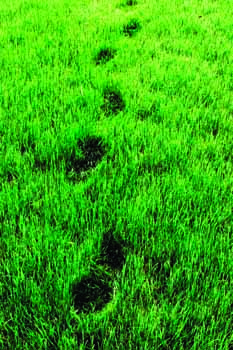
‘Fixing’ the greenhouse effect
The greenhouse effect, carbon cycle and carbon sequestration impact our everyday lives. Grasses, just like trees, are chlorophyll-based plants, absorbing carbon dioxide (CO2) from the atmosphere for use in photosynthesis. The process uses sunlight and water to convert CO2 into carbohydrates and simple sugars to generate energy and growth, ‘fixing’ greenhouse gases from the air into the soil and providing oxygen as a bi-product. Just two square metres of grassland can produce enough oxygen to support one person for an entire day.
A proportion of the absorbed carbon is transferred from the dense canopy and fibrous root system into the soil as plants senesce and decompose. One hectare of natural, open grassland can sequester (lock-up) up to 2.5 tonnes of carbon per hectare per annum, creating a net carbon sink held within the soil profile.
Net carbon sink
All well and good on one hand, but what about the intensively managed grass surfaces such as golf courses, sports pitches and amenity landscaping which, by definition, have a much greater environmental impact. Because managed amenity turf has higher plant populations per square metre than natural grassland, having the availability of amenity cultivars which sequester relatively more carbon can make a significant contribution in mitigating the environmental impact of essential maintenance inputs (mowing, aeration, spreading, spraying) preserving a net carbon sink. A USA study indicated that on average, mowing grass for one hour produces as much pollution as driving 650 miles!
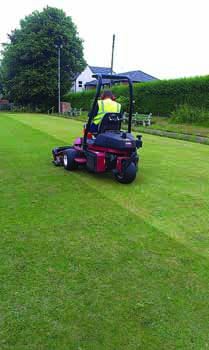
Choosing Carbon4Grass mixtures helps mitigate maintenance inputs
Carbon study
Rigby Taylor has a long and very successful relationship with its French seed-breeding partner Top Green, where a ‘Carbon4Grass’ (C4G) study at Top Green Breeding & Research Station in Les Alleuds, France commenced in 2005. Using well-established grass plots, the initial aim was to identify differences in the carbon sequestration values of managed amenity grass species. The study revealed significant differences between species in their capacity to store and sequester carbon within the leaves, roots and soil profile when managed under exactly the same environmental conditions. The amount of carbon sequestered will vary depending on local environmental conditions and maintenance inputs.
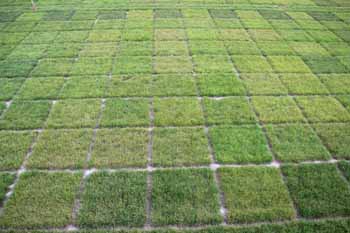
Differences in species ability to sequestrate carbon, Les Alleuds Research Station
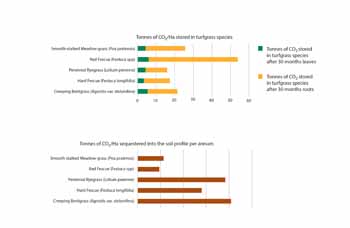
Carbon credentials
The study progressed to assess a range of cultivars within species, with new cultivars from the breeding programme entered into the study over time. The differences in proficiency of individual cultivars to sequester carbon proved to be significant. This knowledge has been used to create Rigby Taylor C4G mixtures, combining increased levels of carbon sequestration potential with desirable amenity characteristics for golf course applications. For example, cultivars with higher carbon ‘scores’ have been identified to help mitigate the impact of tasks such as mowing, which contribute to the carbon footprint. R25 CRT and R6 CRT both demonstrate the potential to sequester significantly more carbon when assessed against comparative 100 per cent ryegrass and rye / fescue mixes supplied for golf tees, fairways, semi-roughs and walkways.
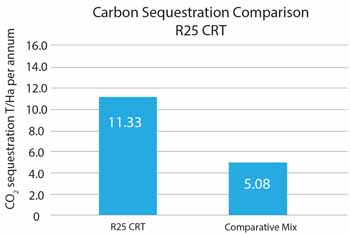
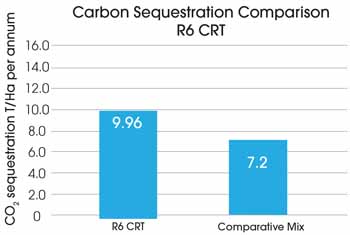
Tetraploid technology
A notable innovation for C4G is the fast establishing and hard wearing tetraploid perennial ryegrass technology, which extends the growing season through cold temperature growth. Tetraploids are actively germinating, growing and photosynthesising in colder conditions from just 40C, thus maintaining active grass cover for longer, to potentially ‘capture’ more carbon.
Tetraploids (4n) have double the chromosomes of a diploid ryegrass (2n), meaning double the chloroplast and chlorophyll for photosynthesis. The root mass of grasses acts as a reservoir for carbon, which eventually transfers into the soil profile as roots die and decompose. Tetraploids have a much stronger, deeper, denser root mass than diploids, delivering greater potential for higher sequestration, an important physiological feature as ryegrass accounts for around 90 per cent of the seeds used to create and maintain amenity turf in the UK.
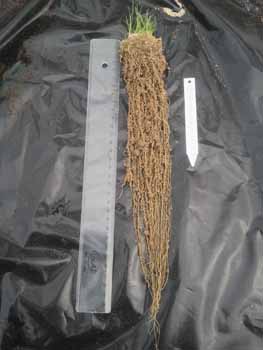
Deeper, denser root system with tetraploids
Tetraploids also have increased tolerance to disease and drought in comparison with diploids. Such potential is enhanced still further with Germin-8T seed treatment, which contains Mycorrhiza and Trichoderma atroviride for symbiotic plant health. Together with tetraploid technology it enables the sowing of C4G mixtures to take place virtually all year round.
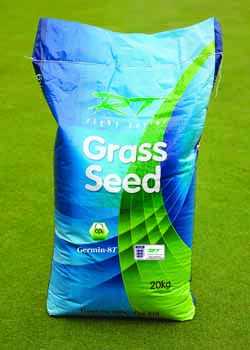
R range of grass seed treated with Germin-8T boosts germination and establishment particularly in cooler conditions
Summary
The past 12 months have been a clear indicator, if ever one was needed, of how changes in climatic conditions are dramatically challenging and shaping our environment. A thoroughly wet winter, cold spring plus summer heat and drought have all taken their toll on natural grass surfaces.

The summer heat of 2018 took its toll on UK golf courses
It is within everyone’s duty of care to ensure we do the utmost to minimise or offset our carbon footprint. Seemingly insignificant choices can collectively make a meaningful contribution overall. Rigby Taylor is making this contribution by offering golf courses a range of Carbon4Grass mixtures that both offset the carbon footprint, combined with improved disease, drought and cold tolerance.
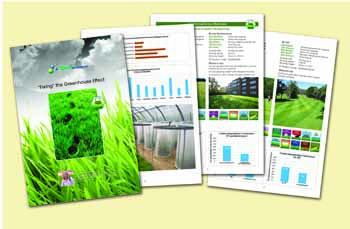
Jayne Leyland is the seeds product manager at Rigby Taylor.
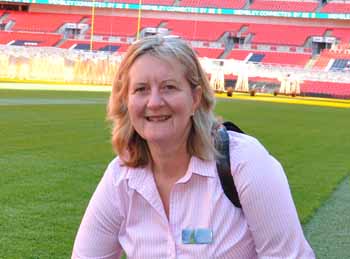
‘Fixing the Greenhouse Effect’ is available on request as a printed brochure detailing more a extended trials data.
Freephone: 0800 424 919

























